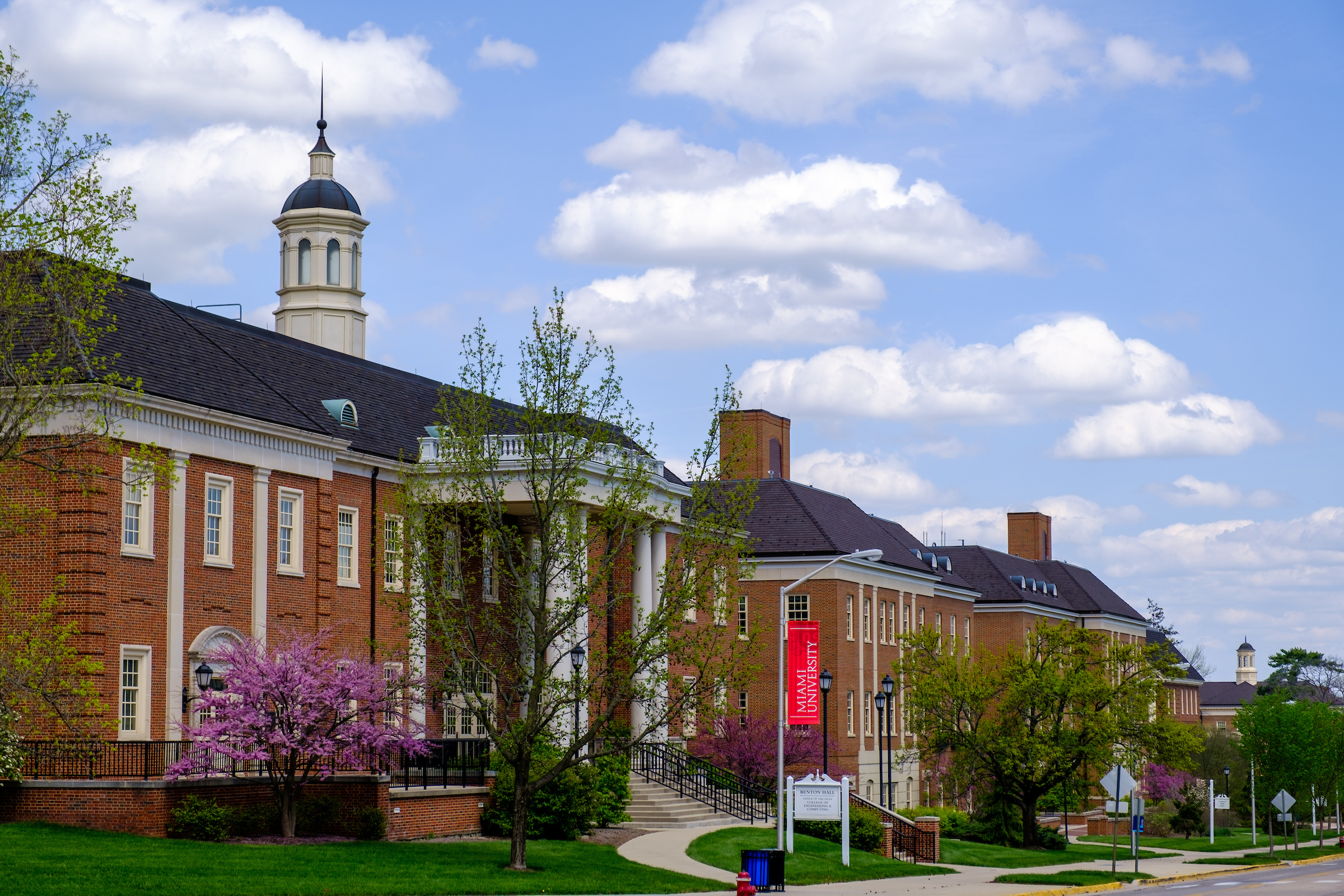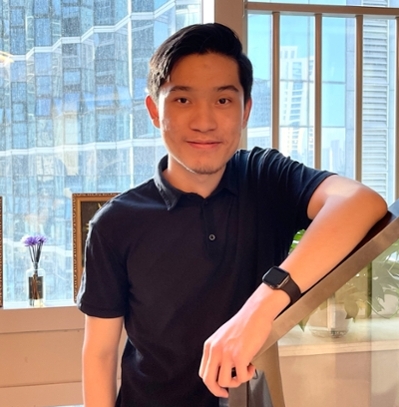
Pair of Miami University studies assesses COVID-19 interventions and vaccine efficacy
Both research papers stem from simulations Li wrote as an undergraduate in a research class he took with Giabbanelli last fall. Li continued to work these over the winter break and into the spring, taking advantage of the access to Microsoft Azure, the state-of-the-art infrastructure to run very large scale experiments. Giabbanelli and Li noted that the Microsoft staff were instrumental in seeing their simulations through, frequently re-running simulations due to changes in federal policies or in the knowledge base about the virus.
“Without Azure and Mr. Li, these papers would not have been possible,” Giabbanelli said. “Very few students across the nation have had this hands-on experience on simulating COVID-19, and even fewer have publications in reputable venues. In fact, Junjiang was so productive that we have submitted two more papers on other simulation topics. This means that, by the time he graduates from Miami University, he may have four academic publications.”
Giabbanelli is an expert in health informatics, with specialties in simulation and machine learning. He serves on the editorial board of several journals in this field (e.g., Intelligence-Based Medicine, BMC Medical Informatics & Decision Making) and provides leadership in his research community, as two times program chair for a major conference (ACM SIGSIM PADS) and as lead editor for the volume Advanced Data Analytics in Health. He has authored almost 90 publications, many of which are co-authored with his undergraduate or masters students (who are listed at https://www.dachb.com/). The quality of these publications has frequently been recognized, by winning or being shortlisted for best paper awards.

By Jessica Rivinius, university news and communications
As businesses and schools around the world grapple with the return to “normal” plans, two recent Miami University studies shed light on the effectiveness of various interventions targeting COVID-19, finding that vaccines alone will not end the pandemic. Though vaccines are powerful, non-pharmaceutical interventions are still needed.
The first study found that mask wearing — together with transitioning to remote work and school — had the largest effect on reducing the transmission of the virus, more so than contact tracing or other interventions.
The second study showed that even if vaccine compliance is just 20%, vaccines can considerably lower the total number of infections over time. That’s good news given current vaccination rates are around 40% in the United States.
Led by Philippe Giabbanelli, associate professor of computer science and software engineering, and Junjiang Li ’21, an undergraduate student in computer science and software engineering, the studies used computer simulations to study the impact of each possible set of interventions on the number of potential COVID-19 cases. These large-scale computer simulations tracked the behavior of more than 500,000 virtual agents (representing a sample of the U.S. population) as they interacted with others in various contexts such as home, work, or their communities.
Validating mask effectiveness

Philippe Giabbanelli
In the first study, “Identifying Synergistic Interventions to Address COVID-19 Using a Large Scale Agent-Based Model,” the researchers examined interventions including face masks, working remotely, stay-at-home orders, testing, contact tracing and quarantining. The broad interventions raised other questions, such as what is the right social distance and what environments require masks?
“The situation quickly becomes very complex for policymakers who have to decide which set of interventions to implement, while accounting for the public response like compliance and possible unknowns like viral mutations,” said Giabbanelli, an expert in bioinformatics who holds a doctorate in computer science. “A trial-and-error approach is problematic: If the set of interventions chosen was not strong enough, then there may be a viral outbreak; conversely, if the population perceives that not all interventions are necessary, then compliance may be affected.”
In addition to validating the effectiveness of mask wearing, the study found that although it is important to have sufficient capacity to immediately and effectively perform contact tracing, this capacity had a lower impact on case numbers.
Though this work will not be presented until mid-June at the 2021 International Conference on Computational Science (ICCS), Giabbanelli and Li made their study available this winter to help inform policies being developed.
Predicting normalcy

Junjiang Li
While the first study focused on non-pharmaceutical interventions, the second study, “Returning to a Normal Life via COVID-19 Vaccines in the United States: A Large-scale Agent-Based Simulation Study,” addressed the question on everyone's mind: When will we return to normal?
“We quickly realized that there are two ways to accomplish this return to normalcy: either the vaccine is quickly administered, or many people become sick and gain immunity, albeit temporary, afterward,” Giabbanelli said. “So the objective is not to get back to our life from before by letting the virus loose in our communities, but rather how quickly we can control it via vaccines and what it would take in terms of logistics as well as compliance.”
The pair started the research in December, when major unknowns remained around the capacity to administer doses each day as well as the percentage of people who wanted the vaccine. They studied the consequences of different interventions and unknowns: two different increases in daily capacity (one under the former administration as “Operation Warp Speed” and one under the current administration), various levels of vaccine efficacy (because variants may lead to lower efficacy than initially found in trials), and several levels of population compliance. They also accounted for six possible combinations of non-pharmaceutical interventions.
In addition to their finding that even low vaccine compliance is effective in the long term, the researchers noted that if vaccine distribution is limited by age categories, an increase in vaccine compliance could lead to more infections.
“The explanation is that it would then take longer for a younger population to be vaccinated, but these individuals have more contacts and hence a greater potential to spread the virus,” Giabbanelli said.
About the studies
The research was funded through a philanthropic grant from Microsoft AI for Health, which provides access to the Microsoft Azure platform. Additional support for the conference and publications come from Giabbanelli’s professional development, Miami University, and credits awarded by the publisher JMIR Medical Informatics to Giabbanelli and Li for service as a reviewer.
Identifying Synergistic Interventions to Address COVID-19 Using a Large Scale Agent-Based Model will be presented in the ICCS conference (online) June 16-18.
Returning to a Normal Life via COVID-19 Vaccines in the United States: A Large-scale Agent-Based Simulation Study is published in the JMIR Medical Informatics.
